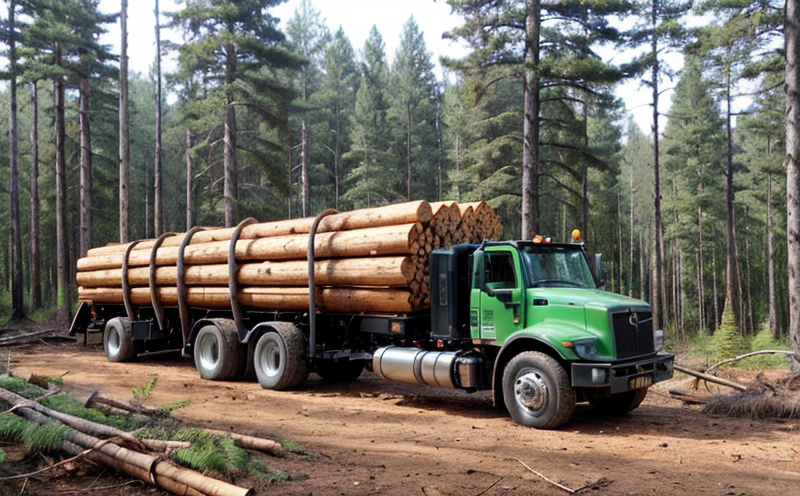Timber Machinability Testing
Timber machinability testing is a crucial aspect of ensuring that wood products meet specific performance standards. This testing evaluates how easily different types of timber can be processed into various shapes and forms using various cutting tools. The process involves assessing the material's resistance to deformation and its ability to maintain structural integrity during machining.
Understanding machinability is essential for optimizing production processes, ensuring product quality, and meeting customer specifications. This test plays a pivotal role in quality control, particularly in sectors like furniture manufacturing, construction, and packaging where precision cutting is paramount.
The testing method typically involves subjecting samples of timber to controlled machining operations under standardized conditions. The resulting cut surfaces are then analyzed for surface finish, tear-out, and overall ease of machining. This data helps manufacturers fine-tune their processes, selecting the most suitable tools and techniques for each type of wood.
For instance, softwoods like pine or spruce may exhibit different machinability characteristics compared to hardwoods such as oak or mahogany. The testing process allows engineers to identify these differences early in the product development stage, ensuring that the final products meet both aesthetic and functional requirements.
In addition to aiding in production optimization, timber machinability testing also contributes significantly to sustainability efforts within the forestry industry. By understanding how different species of wood behave under various machining conditions, manufacturers can make more informed decisions about which woods to use in their products, thereby reducing waste and promoting responsible resource management.
Standardized methods for conducting these tests are outlined in international standards such as ISO 15263-4:2018, which provides guidelines for the determination of sawn timber machinability. Compliance with such standards ensures consistency across different laboratories and helps maintain high-quality benchmarks.
| Indicator | Description |
|---|---|
| Surface Finish | The smoothness and quality of the cut surface. |
| Tear-Out | Amount of material removed beyond the cutting path. |
| Cut Depth | Depth to which the tool penetrates the wood. |
| Tool Wear | Rate of wear on the cutting edge of tools used. |
Industry Applications
Timber machinability testing finds extensive application across multiple sectors within forestry and manufacturing. Furniture makers, for example, rely on this service to ensure that their products are crafted from woods that can be easily shaped into intricate designs without sacrificing strength or stability.
In the construction industry, particularly in structural applications, understanding how timber behaves under various cutting conditions is vital for designing safe and efficient buildings. This knowledge helps architects and engineers select the most appropriate materials based on their machinability properties.
Packaging manufacturers also benefit from this testing as they strive to create lightweight yet robust containers that can withstand transportation stresses. By choosing woods with excellent machinability, these companies enhance both the functionality and durability of their packaging solutions.
Moreover, timber machinability testing supports sustainability initiatives by enabling better utilization of forest resources. Through precise knowledge about how different types of wood respond to machining processes, foresters can optimize harvest strategies, minimizing waste and maximizing yield.
Customer Impact and Satisfaction
For quality managers and compliance officers, timber machinability testing offers a critical tool for maintaining product consistency and meeting regulatory requirements. By leveraging this service, companies can ensure that their products consistently meet customer expectations regarding performance and aesthetic appeal.
R&D engineers involved in developing new wood-based products find timber machinability testing particularly valuable as it provides insights into material behavior under diverse machining conditions. This information is invaluable for innovating processes that enhance efficiency while maintaining quality standards.
For procurement professionals, understanding the machinability of different timber species allows them to make informed decisions about sourcing raw materials from suppliers who adhere to strict quality protocols. This ensures that purchased materials are reliable and meet specified technical criteria, thereby reducing the risk of supply chain disruptions due to substandard goods.
Ultimately, by investing in timber machinability testing services, organizations demonstrate their commitment to excellence in product development and manufacturing. Such dedication translates directly into enhanced customer satisfaction and loyalty, fostering long-term relationships built on trust and reliability.
Competitive Advantage and Market Impact
In today's competitive market, maintaining a robust quality assurance system is essential for staying ahead of competitors. Timber machinability testing serves as an integral component of this strategy by providing actionable insights that drive continuous improvement in manufacturing processes.
By consistently meeting or exceeding industry standards through rigorous testing procedures, companies can gain significant advantages over their rivals. For instance, furniture manufacturers who excel at producing high-quality pieces made from well-machined timber are more likely to attract discerning customers looking for superior craftsmanship and durability.
The same principle applies to construction firms utilizing precisely machined structural components in building projects. Ensuring that every piece fits perfectly contributes not only to aesthetic appeal but also enhances safety and longevity of the structures being built.
Furthermore, packaging companies benefit from this testing by offering more efficient and sustainable solutions. By minimizing waste through optimized cutting techniques informed by machinability tests, these firms contribute positively towards environmental conservation efforts while maintaining profitability.
In conclusion, integrating timber machinability testing into your quality assurance framework can provide a strong foundation for competitive success. It enables companies to innovate smarter, operate more efficiently, and deliver products that consistently meet or exceed customer expectations - all contributing factors in achieving sustained growth within the marketplace.





